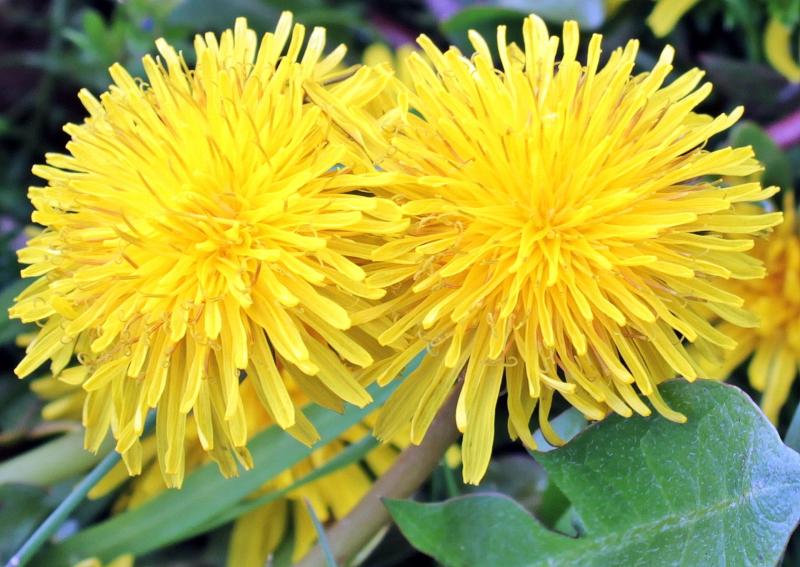Sarah Browning, Nebraska Extension Educator

Dandelions are a perennial weed, each plant can live for many years.
Weed control is one of the biggest challenges most gardeners face in their landscapes, and getting off to a good start with weed control in spring can set the tone for the whole summer. Hopefully most gardeners have already made a preemergence herbicide application to their lawns and gardens to kill weed seeds as they begin to germinate. This spring's warm conditions have made it necessary to make this application about 3-4 weeks earlier than would be done in a "normal" year. Plan to make a second preemergence application in early June.
Dandelions are Perennial Plants
Dandelions are now a concern, since their bright yellow flowers have been evident for over two weeks. Some gardeners don't realize that dandelions are a perennial weed, and if not controlled each plant's crown and root system will remain alive after the leaves have died in fall. Plants overwinter and begin growing again in early spring. Dandelions blooming in early spring do not result from newly germinated seedlings; instead they are the result of the previous year's overwintered plants. Dandelion seeds can be killed with the same preemergence herbicide applied for crabgrass control.
Spring Control
While the ideal time to control perennial weeds is fall, bloom time in early spring is the second-best time of year for control. Spring herbicide applications result in a slightly lower rate of kill, but are still worthwhile.
If only a few weeds are present, then spot treatment is the best method of control. It saves you money due to the reduced amount of herbicide applied, and reduces chemical presence in your landscape. Spot treatment involves spraying each individual weed using a broadleaf herbicide, such as 2,4-D, dicamba or MCPP, in turf areas. Newer products that also provide good control include carfentrazone, sulfentrazone, triclopyr, and quinclorac. Look for these chemical names as part of the active ingredient statement on the front of the bottle. These herbicides are selective and will not damage the underlying grass.
To insure adequate leaf surface and herbicide absorption, don't mow the lawn 2 or 3 days before treatment. After treatment, allow another 2 or 3 days to pass before mowing. This allows sufficient time for the herbicide to be translocated to the plant's roots. To prevent the broadleaf herbicide from being washed off the plant's foliage, apply these materials when no rain is forecast for 24 hours. Also, don't irrigate treated lawns within 24 hours of the application.
In landscaping beds, herbicides can be used but must be applied very carefully. They will damage surrounding trees, shrubs, perennials and annuals if plants are accidentally sprayed or receive spray drift. So use herbicides cautiously!
When weed numbers are high, post-emergent herbicides can be broadcast over the entire yard. Usually these herbicides are formulated in combination with fertilizer, and often are found in the "second step" in many turf product lines. Make this application after irrigation, or early in the morning when the grass is still damp so that the herbicide will stick on the dandelions leaves and have a chance to become absorbed.
As with all pesticide applications, read and follow all label directions, and use all necessary personal protective gear recommended. When making liquid herbicide applications, keep children and pets off the lawn until the product has dried or as specified by the label.
Finally, keep in mind that dandelions can be controlled by hand pulling or digging when small numbers are present. Hand-pull small plants when the soil is moist enough to allow removal of several inches of root. Or use a dandelion digger to cut the taproot off 4-5 inches below the crown of the plant to prevent regrowth.
Search Our Archive
Associated Video
Dandelion Pulling
Nebraska Extension Turfgrass Specialist Bill Kreuser talks about pulling dandelions